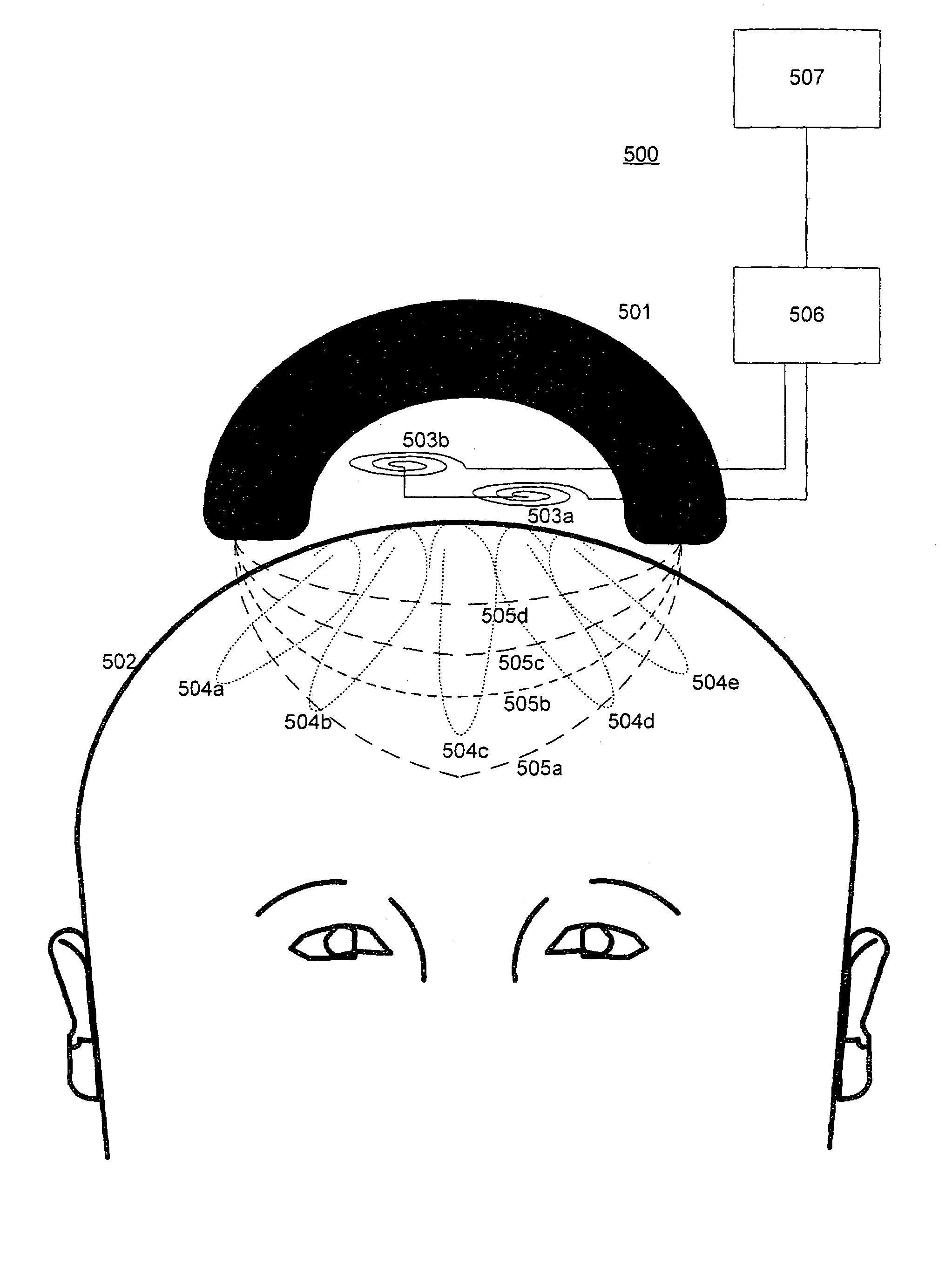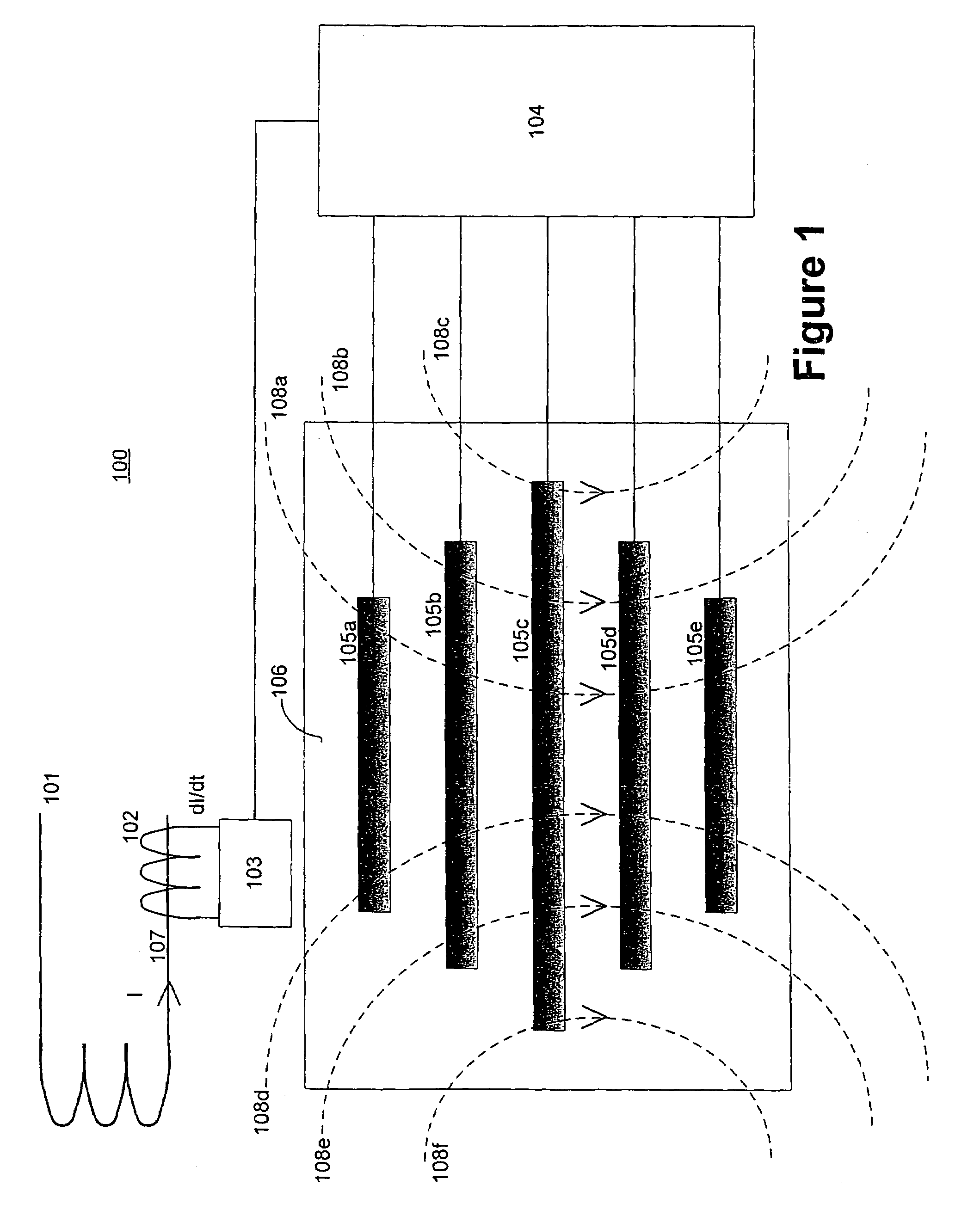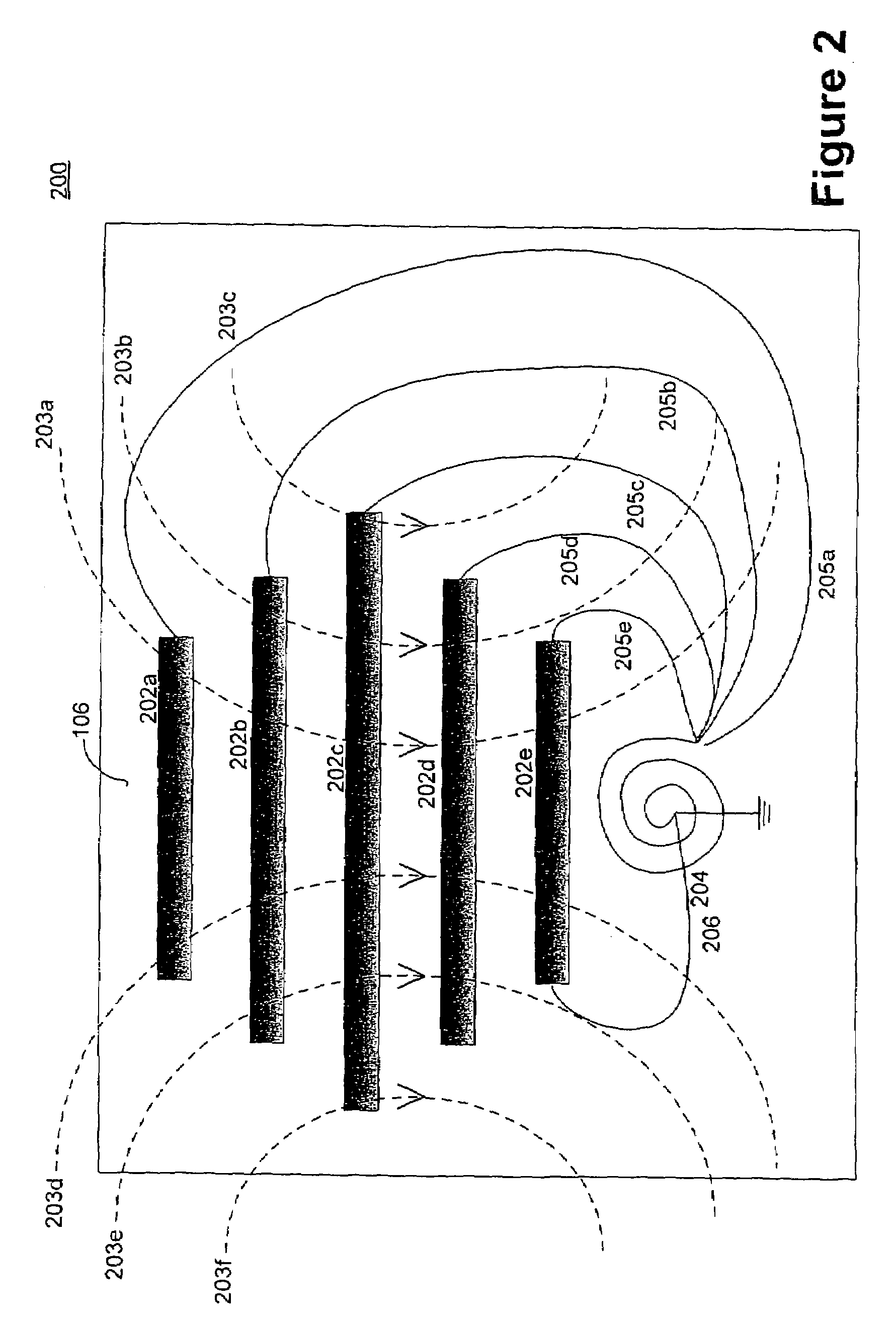Reducing discomfort caused by electrical stimulation
a technology of electrical stimulation and pain, which is applied in the field of electrical stimulation, can solve the problems of patient discomfort at the stimulation site, the difficulty of direct access to the spinal cord, and the inability to achieve satisfactory relief of depression symptoms, so as to reduce discomfort and reduce the effect of transcutaneous stimulation
- Summary
- Abstract
- Description
- Claims
- Application Information
AI Technical Summary
Benefits of technology
Problems solved by technology
Method used
Image
Examples
Embodiment Construction
[0026]Overview
[0027]In 1830, Michael Faraday discovered that the magnitude of an electric field induced on a conductor is proportional to the rate of change of magnetic flux density that cuts across the conductor. Faraday's law, well known to those skilled in the art may be represented as E˜-(dB / dt), where E is the induced electric field in volts / meter, dB / dt is the time rate of change of magnetic flux density in Tesla / second. In other words, the amount of electric field induced in an object like a conductor is determined by two factors: the magnetic flux density and the time rate of change of the flux density. The greater the flux density and its derivative, the greater the induced electric field and resulting current density. Because the magnetic flux density decreases in strength as the square of the distance from the source of the magnetic field, the flux density is greater the closer the conductor is to the source of the magnetic field. When the conductor is a coil, the current...
PUM
 Login to View More
Login to View More Abstract
Description
Claims
Application Information
 Login to View More
Login to View More - R&D
- Intellectual Property
- Life Sciences
- Materials
- Tech Scout
- Unparalleled Data Quality
- Higher Quality Content
- 60% Fewer Hallucinations
Browse by: Latest US Patents, China's latest patents, Technical Efficacy Thesaurus, Application Domain, Technology Topic, Popular Technical Reports.
© 2025 PatSnap. All rights reserved.Legal|Privacy policy|Modern Slavery Act Transparency Statement|Sitemap|About US| Contact US: help@patsnap.com



